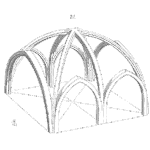
Robustness: That Often Overlooked Yet Powerful Discipline and Toolset. Most companies have a Quality organization, and some have a Reliability organization. But rarely will you find a company with a Robustness organization or even a single Robustness Engineer. And yet, of these three disciplines, Robustness can have the largest impact on your customer satisfaction because Robustness as a discipline and toolset addresses:
- a wider range of field issues than reliability and quality
- those issues that occur during the “design life”
There are many ways to categorize the failures of your company’s products. One way that I’ve found helpful is to break down your product failures into the following three categories:
It’s from these field failure categories that the need grew for the disciplines of Quality, Robustness and Reliability (with each discipline addressing the field failures of the corresponding color above):
A Venn Diagram is a good way to illustrate this because there is some overlap between Robustness and the other two. Defining the three of these disciplines:
Quality – Product produced defect-free.
Reliability – Product designed to last for the expected life for a given usage profile.
Robustness – Product designed and manufactured to be insensitive to:
- Production environment
- Production variation
- Shipment and storage
- Customer use and abuse
- System interactions
- Usage environment (temperature, humidity, cleaners, etc.)
- Environment and usage stress over time
You can see from the definition of Robustness that if you made a product perfectly robust, you could address and eradicate all failures: those spilling into the field from production, design life failures, and even wea- out failures.
Low cost of ownership is one of the top reasons your customers will choose your products over your competition’s. And the biggest driver for cost of ownership will be those failures occurring during the useful life of your product – that is, those failures occurring after the warranty period and prior to the end of life as the following illustrates:
This region of the bathtub curve (shown in green above) is the portion of the bathtub curve, that the tools of robustness are uniquely suited to address. Additionally, Robustness will address production and end-of-life failures along with quality and reliability, respectively, as the grayed-out areas of the bathtub curve depict.
You can see from both the failures that Robustness tools address and the definition of Robustness that if you made a product perfectly robust, you could address and eradicate all failures: those spilling into the field from production, design life failures, and wear-out issues.
Here, I shared the causes of failure that Robustness tools can help with. In my next two articles, I’ll share specific tools of Reliability and Robustness and the advantages of using the two in concert. Suppose your company doesn’t already have a Robustness Engineering group or individual. In that case, I recommend you investigate adding these tools to one of your existing groups — Quality, Reliability, or Design Engineering. Companies I’ve helped in the past have used these tools to address more failures than the tools of Quality and Reliability alone can address, and they’ve used them to outpace their competition.



Leave a Reply